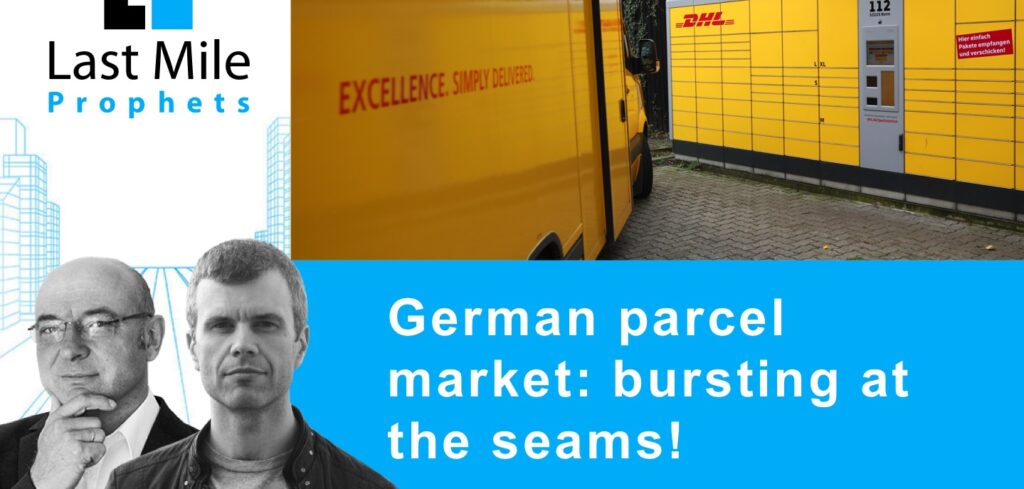The parcel market in Germany is bursting at the seams. More than four billion parcels are now sent in Germany every year. For some years now, there has been a clear shift in the market, with the B2B sector treading water and market growth coming from the B2C sector, mainly thanks to e-commerce. Last Mile Experts now estimates that B2C parcels represent more than 60% of the total market.
So how do CEP service providers deal with this?
B2C parcels bring considerably greater challenges in the last mile, and the consignee is increasingly becoming the ‘director of the supply chain’.
As a result, online shopping is no longer driven by price alone, and the recipient wants to influence the delivery experience, the service provider selection, the point of delivery, the cost and the delivery performance. This is where the growing wave of digitalization comes into play. In addition to the pure online shopping experience, many other criteria now play a major role in choosing the right online store.
Let’s look at the various options. Delivery to the home address is always by far the most expensive option. In addition to the low potential for synergy, successful first-time delivery to a residential address is not always possible. This results in the recipient’s dissatisfaction, as well as unreasonably high costs that make many B2C parcels unprofitable.
Out-of-home (OOH) or PUDO and parcel locker delivery is the answer to this challenge, but who in Germany will seize the day and set up a truly agnostic OOH network? The time is ripe, and consignees are increasingly open to this type of parcel delivery. So far, Deutsche Post DHL has dominated the field with around 9,000 parcel machines and (still) enjoys its patent-related parcel locker monopoly. It also has some 25,000 PUDOs (the latest numbers will be available soon in the Last Mile Experts 2022 European OOH Report) but Deutsche Post operates a closed network that is not available to other carriers.
So, while Germany has the largest OOH network in Europe, with some 70,000 points, it is generally not consolidated and efficient, with each of the main carriers running their own ‘fiefdom’ instead of combining networks to offer a dense, proximate and highly efficient agnostic infrastructure solution.
Will this change?
Amazon now operates nationwide as a last-mile provider and already has an increasingly important market share. It has its own closed infrastructure of access points and operates more than 1,000 lockers.
Deutsche Post’s key locker-related patents are due to expire by 2023. Simultaneously, more and more last-mile startups with innovative, digital delivery concepts are entering the German market.
Google has recently shown interest in this market and has the power to combine several last-mile networks in one virtual place.
Finally, local and central governments are becoming increasingly aware of the need for consolidation to achieve operational and ecological efficiency in the last mile.
Although it is hard to predict the outcome of these developments, consolidation is needed and those players who embrace the need for change will come out as the winners and customer champions, while those who wish to protect their ‘castle’ may end up doing exactly the opposite.

Marek Różycki is managing partner at Last Mile Experts, specializing in CEP and e-commerce last-mile advisory.

Axel Stetenfeld is a Last Mile Experts PRO partner and advises clients on strategy, change management, digitalization, finance and business planning with a focus on M&A-related transactions.


